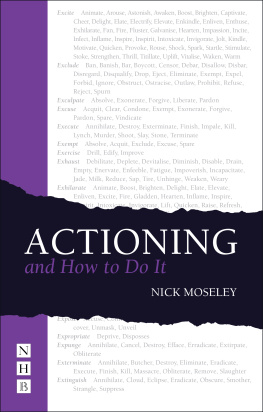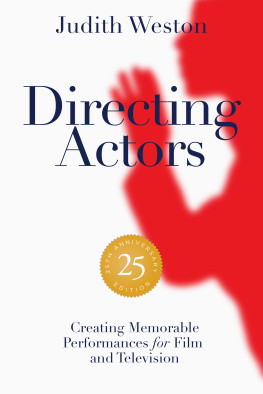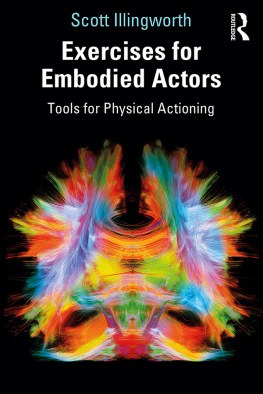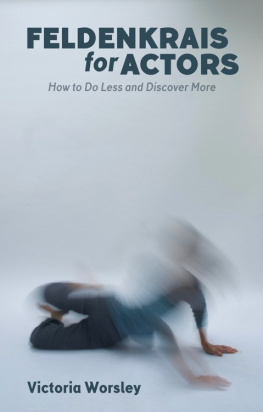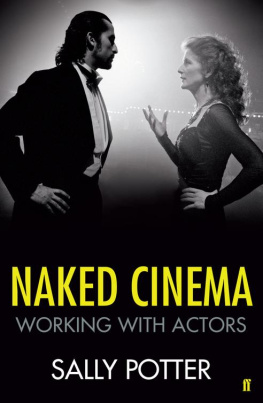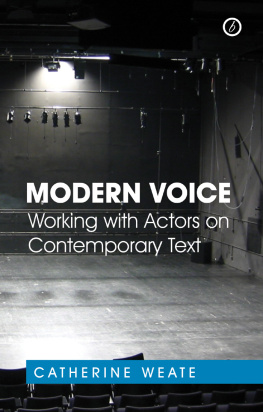ACTIONING
and How to Do It
NICK MOSELEY

NICK HERN BOOKS
London
www.nickhernbooks.co.uk
Contents
Introduction
The Actioning technique, sometimes called Psychophysical Actioning, is probably the most firmly established of all early rehearsal processes within the British theatre. Most drama schools and many directors see it as an essential part of rehearsal table work and the bedrock of the actors work on the text.
Contrary to popular belief, Actioning is not a Stanislavskian technique, and is in fact little used outside of the UK. It was devised and developed by the Joint Stock Theatre Company in the late 1970s under the direction of Bill Gaskill and Max Stafford-Clark, largely in order to empower the actor to serve the play and the production by making clear and simple choices on each line of the text. It has since found its way into the arsenal of the majority of UK actors and directors.
Put simply, the Actioning technique requires you, the actor, in the early stages of rehearsing a play, to divide up your own lines into separate phrases or thoughts, to assign each thought an action verb which expresses the underlying intention of the line, and then, having assembled this series of verbs, to attempt to speak and act each thought in the manner of the chosen verb.
The verbs themselves must be transitive in other words, something your character can do to another character, such as prod, ridicule or encourage, rather than non-transitive verbs such as muse, cry or hesitate, which tend to pull your focus back onto yourself. This means that each thought, spoken with a particular action verb in mind, becomes an attempt to affect another character in the manner implied by that verb.
Actioning is radical because it always begins with the text itself, and with the creation of a template of shifting character intentions that serves as a living analysis of the possible intentions of the playwright. The post-Stanislavskian technique of Active Analysis, by contrast, postpones engagement with the words of the text until the actor is physically and emotionally immersed in the imagined world of the play, and in the relationships and the journey of each scene. In Active Analysis actors initially improvise the dialogue of the play, exploring the relationships and the journey of each scene to the point where the actual text can be drip-fed into the imaginary world thereby created.
There is much argument about which technique works better for actors, but for me the debate is largely irrelevant. In either case you are still faced with the problem of how you deal with that difficult moment when you have to start speaking words written by someone else, and possibly spoken by hundreds of actors before you, as if they had just spontaneously popped into your head within an entirely new and present situation!
My view is that the Actioning technique is a highly effective and efficient way of making the text your own from day one. By Actioning the text, you can impose your actors will upon it, not in a random or perverse way, but by applying an analytical process which encapsulates each moment of a play into a single word that you yourself have selected.
For Gaskill and Stafford-Clark, Actioning was partly a response to the difficulty their actors seemed to have with motivation, especially in the case of political and polemical texts. In productions such as David Hares Fanshen (Joint Stock Theatre Company, 1975), some actors were apparently unable to find the impulse to speak and act in a way that would clearly and simply reveal the human story and the social narrative. The director required the actors to serve the production by inhabiting and living the form of the text; by contrast the actors seemed to want to explore individualised subtextual narratives which were emotionally and psychologically complex but which blurred the dialectical storyline and disrupted its rhythm.
The beauty of the Actioning technique is that, from the outset, it demands that you (often in collaboration with your director) interrogate the text in minute detail in order to find the right verbs to express your interpretation of each thought. The choice of a single verb, simple though it might seem, requires you to think about character, situation, scene objective and relationships at each point in the text, and to encapsulate them in one word. Having chosen your verbs, you then also have to play them, through clear and tangible vocal shifts between one verb and the next. By bringing your vocal and physical resources to the task of delivering a line in the manner of the verb, you then start to own the text from a very early stage of rehearsal.
Actioning has often been criticised for being inorganic, and for not allowing the actor enough space to discover the meaning of the text through rehearsal and interaction. Actors have claimed to feel straitjacketed and constricted by their action-verb choices, unable to speak as their impulse dictates in the moment. My view of this is that Actioning is no different from any of the other set elements of the play and production. You cannot generally stray from the playwrights text, or from the moves set by the director, since those elements are fixed. So it is with the action verbs, yet none of these fixed aspects necessarily leads to a fixed performance. Even within those boundaries, you, the actor, still have huge scope for being reactive, impulsive and present, and no two performances will ever be quite the same. Like the text, the blocking and all the other fixed elements of a performance, the action verbs are there to help and support you to give you a structure and a direction so that you can be free to respond in the moment without fear of losing the thread of the narrative or the form of the play.
Having said that, it is important to remember that action verbs can also be changed, not randomly or inadvertently, but through moments of clarity and realisation, when you decide at some point in rehearsal that your initial choice is not working. My view is that you are more likely to arrive at such moments by making clear and definite choices to begin with.
It might also be argued that Actioning serves another vital purpose, crucial to the age we live in, which is to force actors to develop vocal and physical precision and to broaden their expressive range, in a world where so much of our communication is now electronic and where the notion of being physically, vocally and mentally present is blurred by the reality that, for much of our lives, we are communicating simultaneously within two or three different contexts. For young actors in particular, the process of turning the body into a clear and efficient signifier, and of focusing the mind onto a single thought and intention in each moment of the action, works in opposition to the recent cultural shifts which encourage a much more dispersed energy and divided focus. This is not an entirely new endeavour actors have always had to learn to speak and move with clarity but there has never been a greater need for core training techniques which inspire and stimulate actors to expand and refine their physical and vocal capacity. Actioning is such a technique, and I believe it to be a fundamental tool for approaching text.
This book will attempt to go beyond traditional notions of using Actioning in rehearsal, by investigating the Actioning technique both as a tool for analysing and speaking text, and as a springboard into the actual staging of a scene. When I first used the technique, as an actor in the 1980s, I found it hard to see the connection between the action verbs chosen on the text and the work done on the rehearsal-room floor, and I saw other actors also struggling with this. Over many years of teaching the technique I have realised that action verbs also have a strong spatial/physical dimension which offers the actor possibilities for interacting with other characters and with the space. In the later chapters of this book I will be giving an account of these discoveries and showing how the actor can use Actioning as a physical as well as a verbal tool.
Next page
